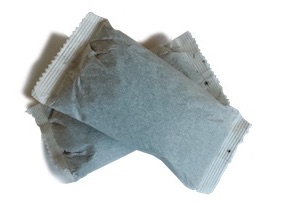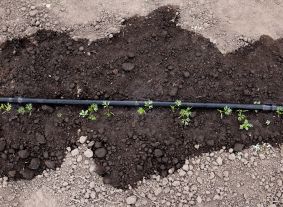Using Soil Microbes in Plant Foods
Views: 4071

Most of us grew up with a very rudimentary understanding of what plants need to grow. We understood that plants need nitrogen (N), phosphorus (P) and potassium (K)—and a few other things, too, of course. (Maybe microbes?) But the N-P-K ratio somehow became the end all, be all of plant nutrition. So much so that plant food/fertilizer products usually emblazon that N-P-K ratio front and center on the packaging.
What plants need to not only survive and thrive is becoming better understood not only by researchers but also by plant professionals and the general gardening public. For example, there is a whole ecosystem of organisms in the soil that feed and nurture plants. This complex system of organisms is known as the soil biology. And while scientists still have a long way to go to understand the relationships between these microscope organisms and the plants themselves, we already have a working knowledge of it. Enough, at least, to allow us to apply it to our gardens.
Bio Microbes
For many years now, manufacturers of plant foods have been making products that include beneficial organisms. These are most often fungi that create a mycorrhizal relationship with the plant’s root system. There are other bacteria and fungi manufacturers have been using that also aid in a plant’s nutrient and water uptake and protect the plant from pathogens in the soil.
An important aspect of these biological additives for plants that home gardeners should be aware of is that these additives work best if they are in direct contact with the plant’s root system. That way these microbes have the best chance of forming a biological connection with the plant. You can do this in two ways, as exhibited by two products with which I’m familiar. The first is the Bio-tone Starter! Plus from The Espoma Company. (Bio-tone is Espoma’s proprietary combination of beneficial microbes.) Add this granular product into the planting hole when you put the plant into the ground.
The second product is the Fuhgeddaboudit Root Zone Feeder Packs from Organic Mechanics. These feeder packs contain mycorrhizae (along with a bunch of other ingredients). Add these into the planting hole at time of planting. The addition of water right after planting (with both products) is want activates the microbes to begin their jobs of connecting with the plant’s roots.
What to do
That last part – activating with water – is important. If these microbes are in a soil or compost or planting mix that has some moisture—and therefore also some active organisms such as algae or moss—it’s more than likely that those algae or moss will activate the soil microbes before the gardener can use it in the ground. Essentially, the microbes in the package are used up before they get added to the ground. So, watch for products that contain soil/compost mixes and claim to have added microbes. Also, stay away from microbe-containing products that have been stored in full sun or exposed to rain at your garden center. Again, the microbes may have been rendered ineffective.
There are some products on the market that do combine the microbes with a planting mix. In these cases the microbes are encapsulated to protect them until you activate them at planting time. There are also some liquid plant foods that contain these encapsulated microbes.
So, if you’re hoping to change up your fertilizing game with year, perhaps consider using a product with a little biology thrown in.
Meet Ellen Wells
When you’re raised on a farm, you can’t help but know a thing or two about gardening. Ellen Wells is our expert on edible gardening.…
Ellen's Recent Posts

Asparagus






